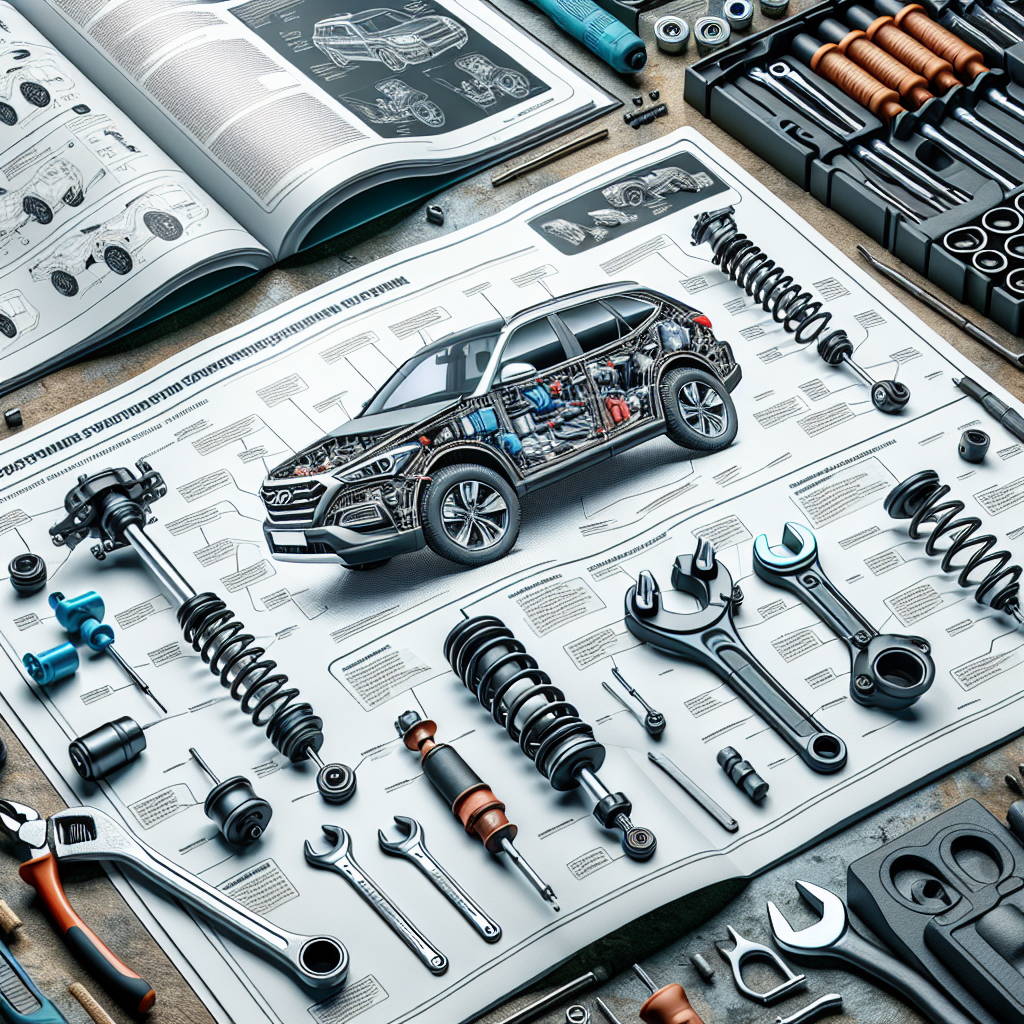Published in
ZPA INCORPORATED

Experiencing suspension issues with your Hyundai Santa Fe 2018? You're not alone. Many drivers notice unusual noises, vibrations, or a decline in ride comfort, and these symptoms can point to underlying suspension problems. This guide provides detailed steps to diagnose and repair suspension issues, ensuring your vehicle's safety, stability, and comfort.
Identifying Suspension Issues
Common Symptoms
- Unusual Noises: Clunking, rattling, or squeaking sounds often indicate worn or damaged suspension components.
- Vibrations: Feeling vibrations through the steering wheel or seat can suggest issues with shocks, struts, or alignment.
- Handling Problems: A decline in handling, such as excessive body roll or difficulty steering, points to suspension concerns.
Diagnostic Steps
- Visual Inspection:
- Examine shocks, struts, springs, and control arms for visible damage or wear.
- Road Test:
- Drive the vehicle to identify when and where the noises or vibrations occur.
- Electronic Diagnostic:
- Use diagnostic tools to scan for error codes related to the suspension system.
- Ride Height Adjustment:
- Measure and adjust the vehicle's ride height to ensure it meets specifications.
- Wheel Alignment:
- Check and correct alignment to eliminate misalignment contributing to suspension issues.
- Tire Inspection:
- Assess tire condition and wear patterns for insights into suspension problems.
- Service History Review:
- Review maintenance records and discuss recent driving conditions with the owner.
Repair Process
Step-by-Step Repair
- Visual Inspection:
- Thoroughly examine all suspension components for damage or wear.
- Road Test:
- Identify specific component problems through testing for unusual noises and vibrations.
- Electronic Diagnostic:
- Scan for error codes to find electronic issues or sensor malfunctions.
- Ride Height Adjustment:
- Adjust ride height to improve stability and comfort.
- Wheel Alignment:
- Correct alignment to enhance handling and tire wear.
- Tire Inspection:
- Ensure proper tire maintenance for optimal suspension performance.
- Component Replacement:
- Replace damaged or worn parts with high-quality, manufacturer-recommended ones.
- Final Inspection and Road Test:
- Conduct a final inspection and road test to ensure full functionality and improved ride comfort.
- Recommendations and Maintenance:
- Provide ongoing maintenance tips to ensure suspension longevity and performance.
Potential Replacement Parts and Estimated Costs
- Shocks and Struts:
- Cost: $400 - $700 (per set, front or rear)
- Control Arms:
- Cost: $300 - $500 (per pair, front or rear)
- Springs:
- Cost: $100 - $300 (per set, front or rear)
- Sway Bar Links:
- Cost: $50 - $100 (per pair)
Labor Costs
- Labor costs can range from $200 - $500, depending on the work required.
FAQs
How do I know if my suspension needs repair?
- Look for signs such as unusual noises, vibrations, handling issues, or uneven tire wear.
Can I drive with a damaged suspension?
- It's not recommended. Driving with a damaged suspension can compromise your vehicle's safety and handling.
How often should I have my suspension checked?
- Regularly inspect your suspension components during routine maintenance, such as every 10,000 miles or annually.
What are the benefits of repairing my suspension?
- Repairing your suspension improves ride comfort, vehicle stability, handling, and overall safety.
Are aftermarket parts as good as OEM parts?
- While some aftermarket parts can be high quality, it's generally best to use OEM parts for guaranteed compatibility and performance.

